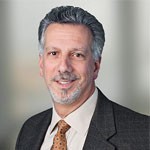Matters to You Blog
Philips Healthcare

By Gene Saragnese
The theme of the 2015 European Congress of Radiology (ECR) is “Radiology without Borders”; a reference to the reality that while countries have strikingly different healthcare profiles – they share many of the same challenges and opportunities.
From Belfast to Budapest and well beyond, health systems are struggling with high pressure on costs, the demand for more care, and the smart use of data. Today, radiology is at the forefront of fast-changing technologies that offer a continued stream of major clinical advances, better patient experiences, and improved economic value for institutions that can address these challenges and transform care across the enterprise… and beyond.
Trend #1: We will see more and see it sooner – The introduction of quantitative digital imaging creates intelligence out of the image, making it no longer passive, but active. Spectral resolution delivers anatomical information and the ability to characterize structures. Hybrid Imaging is opening up new metabolic, molecular imaging frontiers so you can see both the cellular function as well as the molecular process underway inside a living patient – enabling assessment of how well a treatment is working so it can be adapted as needed. Add to that, decision support and algorithms that can, for example, track tumors during treatment. The bottom line? An uncertain diagnosis leads to more tests and more costs. The right tests, integrated with relevant information about the patient, will create the shortest path to the best care at the lowest cost.
Trend #2: Radiologists will become “integrators” – It is clear that the confluence of information from multiple sources – whether it’s electronic medical records, genomic maps of the patient, family history – increases diagnosis confidence. To use this data effectively for enhancing patient care, I see radiologists becoming “integrators,” of data and analytics. Radiologists will play an increasingly important role within an integrated team of professionals – specialists, care team members, and even the patients – to connect the dots through patient data, and develop a complete, holistic view of the patient’s care and treatment plan. Advances in radiology in the next five years will rewrite everything we know from the last 40 – we are on the precipice of major clinical breakthroughs and radiology can lead the way.
Trend #3: Innovations will enable high touch patient experiences – New innovations are enabling radiology to add the human element in healthcare. The fact is, a relaxed patient takes a better image and doesn’t need to be re-tested. Today’s MRI can include a soothing audio and visual accompaniment. Equally, breakthroughs in radiation dose reduction and meaningful design are significantly changing the healthcare experience for the better. From a more comfortable and less stressful mammogram, to tracking the radiation dose of patients over time (and now, clinicians too), radiologists will be playing a key role in moving patients across the health continuum with more precision and efficiency.
These 3 trends position the Radiologist as the cornerstone of definitive diagnosis and effective treatment. Radiology continues to be at the heart of excellent care, and I believe “Radiology Without Borders” is achievable, and even a critical need of the hour.
Source: Saragnese, G. Three Trends that will Create Radiology without Borders. Matters to You. Philips Healthcare. http://www.philips.com/e/innovationmatters/blog/three-trends-that-will-create-radiology-without-borders-.html




